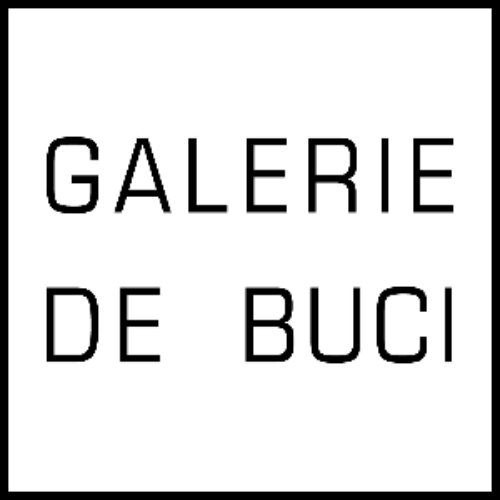Maxime Vardanian In Layers and Motion
A look at the expressive techniques behind Vardanian’s paintings
Maxime Vardanian, Birthday Cake, 1989
Photo: Galerie de Buci
In today's article we honor Maxime Vardanian's current exhibition at the Galerie de Buci: A Personal Story. Maxime Vardanian, the first artist to exhibit at Galerie de Buci, brings a striking, visceral energy to contemporary painting, and in this article we will focus on some of the defining aspects of his work.
Born in Uzbekistan and still actively working, Maxime Vardanian's art fuses the dreamlike sensibilities of Chagall with the raw intensity of Soutine. His latest exhibition showcases a series of paintings that captivate audiences through five distinct characteristics: an intricate "frame within the frame" technique, his use of a thick and rugged texture, bold and electrifying colors, agitated lines that pulse with movement, and an evocative selection of subjects, including animals, flowers, and intimate portraits.
Windows Within the Canvas
From a close analysis of Vardanian's work, one of his signature elements is the use of embedded frames within his paintings. These smaller images, true images within the frame, act as portals into alternate realities, drawing viewers into layered narratives. Whether a delicate miniature portrait nestled within a larger composition or a secondary scene emerging from a textured expanse, these visual insets blur the boundaries between the artwork and the observer’s imagination. This technique, reminiscent of medieval diptychs or cinematic close-ups, enhances the storytelling capacity of his works, making each piece a world unto itself. One striking example is "Infanta With a Watermelon," a painting of an Infanta who appears adorned with a necklace-like arrangement of smaller portraits and landscape scenes. This interplay between scales creates a visual dialogue, reinforcing the dreamlike and fragmented quality of Vardanian’s art.

Maxime Vardanian, Infanta With a Watermelon, 1989
Photo: Galerie de Buci
Photo: Galerie de Buci
The Power of Thick Texture
Vardanian’s application of paint is strikingly physical. Heavy, impasto layers create a rugged surface that begs to be touched, evoking the expressive textures of Outsider Art (the English equivalent of Art Brut). This almost sculptural approach to painting gives his works a palpable presence, reinforcing the emotional weight of his subjects. The thick accumulation of pigment not only adds depth but also accentuates the turbulence of his compositions, transforming his canvases into dynamic, living entities. His paintings invite an almost physical response from viewers, particularly in his depictions of food, where thick layers of paint heighten the sensory experience. In "The Banquet," for instance, a lobster plate and oysters are rendered with such richly textured brushstrokes that they seem almost tangible, their presence on the canvas inviting a visceral reaction. The tactile quality of these works reinforces the materiality of his subjects, making them feel as though they exist beyond the painted surface.

Maxime Vardanian, The Banquet, 1989
Photo: Galerie de Buci
Photo: Galerie de Buci
A Symphony of Bold Color
Color is a driving force in Vardanian’s art. His palette is unapologetically vibrant, favoring intense reds, electric blues, and vivid yellows that clash and harmonize in equal measure. This bold use of color amplifies the emotional resonance of his subjects, whether in the warmth of an amber-hued background or the dissonance of a strikingly green-faced figure. The intensity of his chromatic choices imbues his works with a sense of heightened reality, where color transcends representation and becomes an emotional force in itself. His masterful manipulation of color adds another dimension to his work, appealing directly to the subconscious. Vardanian’s chromatic choices do not merely serve aesthetic purposes; they evoke deep psychological reactions, drawing the viewer into an emotive dialogue with the canvas. In "Birthday Flowers," for instance, a bouquet of multicolored flowers is set against a striking red background, with a contrasting white setting that enhances the intensity of each hue. The bold juxtaposition of colors creates a heightened emotional atmosphere, reinforcing the surreal and almost hypnotic quality of his paintings.

Maxime Vardanian, Birthday Flowers, 1989
Photo: Galerie de Buci
Photo: Galerie de Buci
Agitated Lines, Unstable Contours
Unlike the smooth, controlled outlines of classical portraiture, Vardanian’s lines are restless, shifting, and dynamic. Contours waver and twist, as if resisting definition, giving his figures a sense of instability and urgency. This technique injects movement into the composition, making his subjects appear in a constant state of flux. Faces seem to vibrate, landscapes pulsate, and even still-life arrangements appear on the verge of transformation, verging on Expressionism. These agitated lines lend his paintings a raw, expressive intensity that mirrors the unpredictability of human emotion, heightening the impact of his paintings, making each piece feel like it exists in a state of flux. In "Franz Joseph," for example, the tilted angle of the figure gives the impression of unbalance, while the shaky lines defining his coat and hat emphasize an unsettling, yet captivating, visual tension. The instability in his compositions challenges the viewer’s perception, evoking a subconscious reaction that mirrors the very nature of memory and emotion—ever-changing, elusive, and open to reinterpretation

Maxime Vardanian, Franz Joseph, 1990
Photo: Galerie de Buci
Photo: Galerie de Buci
A World of Animals, Flowers, and Historical Figures
Vardanian’s subject matter is at once personal and universal. He gravitates toward themes of nature and history, frequently depicting animals in surreal settings, lush floral arrangements, and close-up portraits of figures who seem to belong to another time. These portraits, with their exaggerated features and spectral presence, evoke both nostalgia and a sense of mystery, while his still-life compositions bristle with unexpected dynamism. Whether painting a noble figure from the past or a delicate bouquet, Vardanian infuses each subject with a dreamlike quality that lingers in the viewer’s mind. His portraits of dogs, in particular, reveal a careful and almost reverential approach to their depiction. These animals are not merely passive subjects; rather, they are rendered in elegant, deliberate poses that give them an uncanny sense of personality, often mirroring human-like qualities. One remarkable example is "Royal Dog," in which a white hound stands against a pink background, its gaze defiant and almost regal. The compositional choices, from the poised stance to the intensity of its expression, imbue the dog with a presence that transcends mere representation, making it appear as though it commands the same gravitas as his human figures. These works challenge the viewer to reconsider the emotional and symbolic roles that animals play in visual culture.

Maxime Vardanian, Royal Dog, 1989
Photo: Galerie de Buci
Photo: Galerie de Buci
Maxime Vardanian’s work is a testament to the enduring power of painting as a medium of emotional and intellectual engagement. His ability to merge rich textures, vivid colors, and dynamic compositions with a deep, almost mythical sensibility makes his paintings more than just visual experiences—they become portals to alternate realities. By blending the ethereal quality of Chagall with the visceral energy of Soutine, Vardanian has crafted a unique visual language that continues to captivate and challenge audiences. Come to the Galerie de Buci to see a remarkable example of contemporary painting’s ability to both honor tradition and break new ground.

